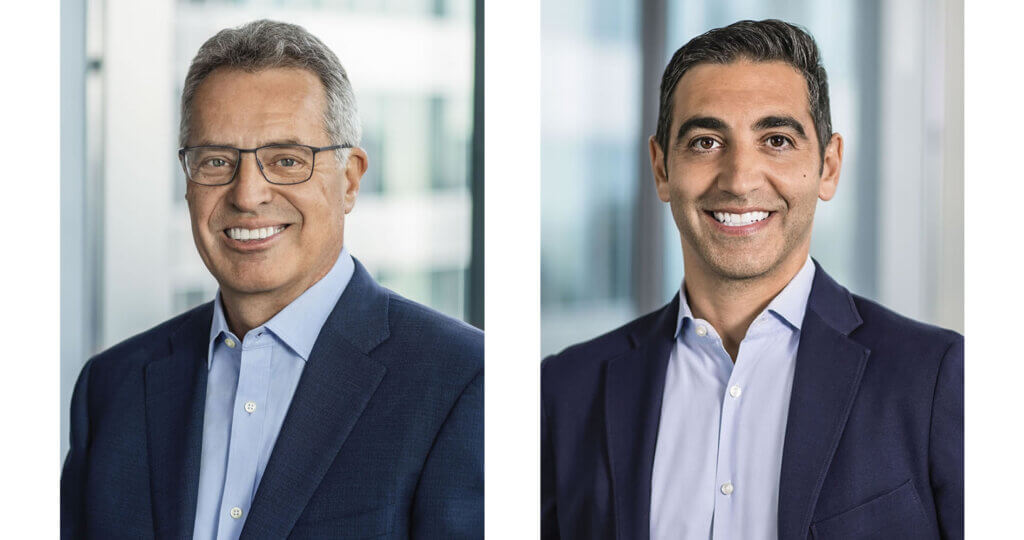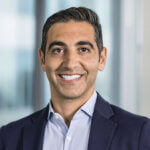Merger and acquisition activity in the past two quarters has been at the highest level in the past five years. Dealogic reported that $268 billion in deals were announced in the first quarter, including Heinz at over $27 billion and Dell at $21 billion. These were the first deals to top $20 billion since 2007. More on those later.
At Oakmark, we are long-term investors. We attempt to identify growing businesses that are managed to benefit their shareholders. We will purchase stock in those businesses only when priced substantially below our estimate of intrinsic value. After purchase, we patiently wait for the gap between stock price and intrinsic value to close.
We have been saying for some time that we expected to see a healthy pace of acquisitions. Corporations today have unusually strong balance sheets and are generating much more cash than they can profitably reinvest in their own businesses. Unless managements just let the piles of cash keep growing, which is clearly suboptimal, there are only three ways to deploy it: higher dividends, share repurchases and acquisitions. And companies are doing all three. The S&P 500 dividend has increased 18% from a year ago, shares outstanding have decreased and acquisition activity has risen.
The companies we are invested in are also doing all of those things. To demonstrate this, let’s look at the Oakmark Fund holdings. At quarter-end, the Oakmark Fund held 53 different stocks. In 2011, 44 of those stocks paid dividends, and 40 of them raised their dividends last year. Excluding Apple and Dell, because they paid their first dividends in 2012, the average dividend increase for our holdings was 17%. Since that average includes some big percentage increases off small bases, the 13% median increase for all our stocks probably provides a fairer representation.
Further, our companies reduced the number of shares they had outstanding. A stock represents a percentage ownership in a business, so a reduction in the number of shares outstanding means that shareholders who owned the same number of shares actually increased their percentage ownership. Several of our companies had very large reductions in shares, led by AIG (down 22%) and DirecTV (down 15%). In total, 39 of our 53 holdings ended the year with fewer shares outstanding than they started with, and the median decrease was 2%. Though that may not sound like a big decrease, remember that if a company reports earnings growth of 5% and has a 2% decrease in shares, EPS will grow 7%.
Of the 44 companies that paid a dividend in 2011, 34 of them both increased that dividend and decreased outstanding shares. Whether through dividend payouts, share repurchases, or both, companies that return so much capital to their owners deserve applause.
Our companies were also active acquirers. Capital One made a couple of high-profile acquisitions of bank deposits and credit card loans that meaningfully increased its scale. But with that exception, most of our companies made quiet, add-on acquisitions of small companies where they could achieve higher sales, lower costs or both when compared to the previous owners. Of our 53 companies, 39 grew by acquiring businesses in 2012.
We focus on these uses of cash because we believe other investors don’t. They assume that EPS growth and dividend growth will mimic organic net income growth and that, when they diverge, it is unsustainable. We believe that historically low dividend payout ratios make it likely that dividend growth will exceed EPS growth for years to come. In 2012, the S&P payout ratio (dividends divided by net income) was 30%. From the 1960s to the 1980s, that same ratio averaged 50%. If earnings grow at 5% per year, and if by the end of the decade the payout ratio has returned to 50%, annual dividends will have grown at a double-digit rate, more than double the rate of earnings growth.
We also believe EPS growth will exceed organic net income growth. Most of the share repurchases and acquisitions that our companies made last year were funded from cash generated in the normal course of operations, not from a one-time levering up of their balance sheets. Of our 53 companies, 22 ended last year with fewer dollars of net debt than they started the year with, and more importantly, slightly more than half reduced their net debt relative to their annual cash flow. On average, their existing businesses grew, they added income from new businesses, they reduced their share count, and they ended up with stronger balance sheets than they had started with.
Back to Heinz and Dell. We took special interest in both mergers because we owned both companies. Oakmark Fund bought Heinz in March 2000. We significantly reduced our weighting after the financial crisis because Heinz shares held up so much better than most stocks. But the stock didn’t reach our sell target, so we retained the reduced position. The proposal for Heinz to be acquired at $72.50 was consistent with our estimate of value. As long-term shareholders, we have developed great respect for the members of Heinz’s management team, and they didn’t disappoint us when they had the opportunity to sell the business for a fair price. The retrospective we wrote on our Heinz holding is still available here.
The Dell situation hasn’t been as straightforward. Dell has been — and continues to be — a sizable position in several of our Funds. In our annual report for the year ended September 2012, we wrote about Dell as one of our worst performing holdings for the year. Investors were frustrated that its personal computer business, its biggest revenue generator, was in decline. We owned Dell because of its non-PC businesses, which appear to generate most of its profits, and because we believed that, at its market price, we were getting paid to own the declining PC business.
In February, private equity firm Silver Lake and Dell CEO Michael Dell offered to purchase all outstanding shares for $13.65 per share. Though that price was a nice premium to the year-end share price of $10.14, many of Dell’s long-term investors, including us, thought the offer should have been higher. Several of our shareholders expressed concern that we didn’t complain vocally enough in the press, as some of our peers did. Just because we aren’t talking publicly doesn’t mean we aren’t talking.
First, by the time we decide to invest in a company, we have already concluded that management and the board are likely to act in our interest. If we conclude otherwise, we simply walk away and move on to the next candidate for investment. Once we own a stock and believe we have a point of view that should be of interest to management or the board, we are not shy about communicating with them. Sometimes they can show us why we are wrong, sometimes they adopt our point of view. Most of the time, these are very friendly discussions among professionals who share the same goal – maximizing the value of our investment.
Occasionally, and thankfully not too often, we have important disagreements with management or the board. If we conclude they are not trying to maximize value, we usually sell our stock and reinvest in a different undervalued company. Every once in a while, the undervaluation is too large to match in a new holding, so we end up in a public dispute with management. But our process is designed to minimize those situations.
In the case of Dell, we have shared our thoughts with the board, especially regarding the importance of conducting an open process so that all offers receive fair consideration. They completely agreed. So far, we are satisfied with how the special committee of directors is performing its task. We fully expect that it will seek out the best deal for its shareholders. Should that change, though we don’t expect it will, then and only then will you read what we’re concerned about in the press.
As I write this, two alternative acquisition proposals have been presented to Dell’s board, and the committee is reviewing them. We expect them to conclude, as we have, that an offer superior to Silver Lake’s offer has now been presented. Once that happens, Silver Lake will have an opportunity to outbid the new offer. Though we are probably in the late innings of our Dell ownership, we don’t think the game is quite over yet.
As of 3/31/13, H.J. Heinz Co. represented 0%, Dell, Inc. 2.1%, Apple, Inc. 1.9%, American International Group, Inc. 2.3%, DIRECTV 2.4%, and Capital One Financial Corp. 2.3% of the Oakmark Fund’s total net assets. Portfolio holdings are subject to change without notice and are not intended as recommendations of individual stocks.
As of 3/31/13, H.J. Heinz Co. represented 0%, Dell, Inc. 4.5%, Apple, Inc. 0%, American International Group, Inc. 5.1%, DIRECTV 4.9%, and Capital One Financial Corp. 5.2% of the Oakmark Select Fund’s total net assets. Portfolio holdings are subject to change without notice and are not intended as recommendations of individual stocks.
The S&P 500 Total Return Index is a market capitalization-weighted index of 500 large-capitalization stocks commonly used to represent the U.S. equity market. All returns reflect reinvested dividends and capital gains distributions. This index is unmanaged and investors cannot invest directly in this index.
EPS refers to Earnings Per Share and is calculated by dividing total earnings by the number of shares outstanding.
The Oakmark Fund’s portfolio tends to be invested in a relatively small number of stocks. As a result, the appreciation or depreciation of any one security held by the Fund will have a greater impact on the Fund’s net asset value than it would if the Fund invested in a larger number of securities. Although that strategy has the potential to generate attractive returns over time, it also increases the Fund’s volatility.
Because the Oakmark Select Fund is non-diversified, the performance of each holding will have a greater impact on the Fund’s total return, and may make the Fund’s returns more volatile than a more diversified fund.
Investing in value stocks presents the risk that value stocks may fall out of favor with investors and underperform growth stocks during given periods.
The discussion of the Funds’ investments and investment strategy (including current investment themes, the portfolio managers’ research and investment process, and portfolio characteristics) represents the Funds’ investments and the views of the portfolio managers and Harris Associates L.P., the Funds’ investment adviser, at the time of this letter, and are subject to change without notice.






